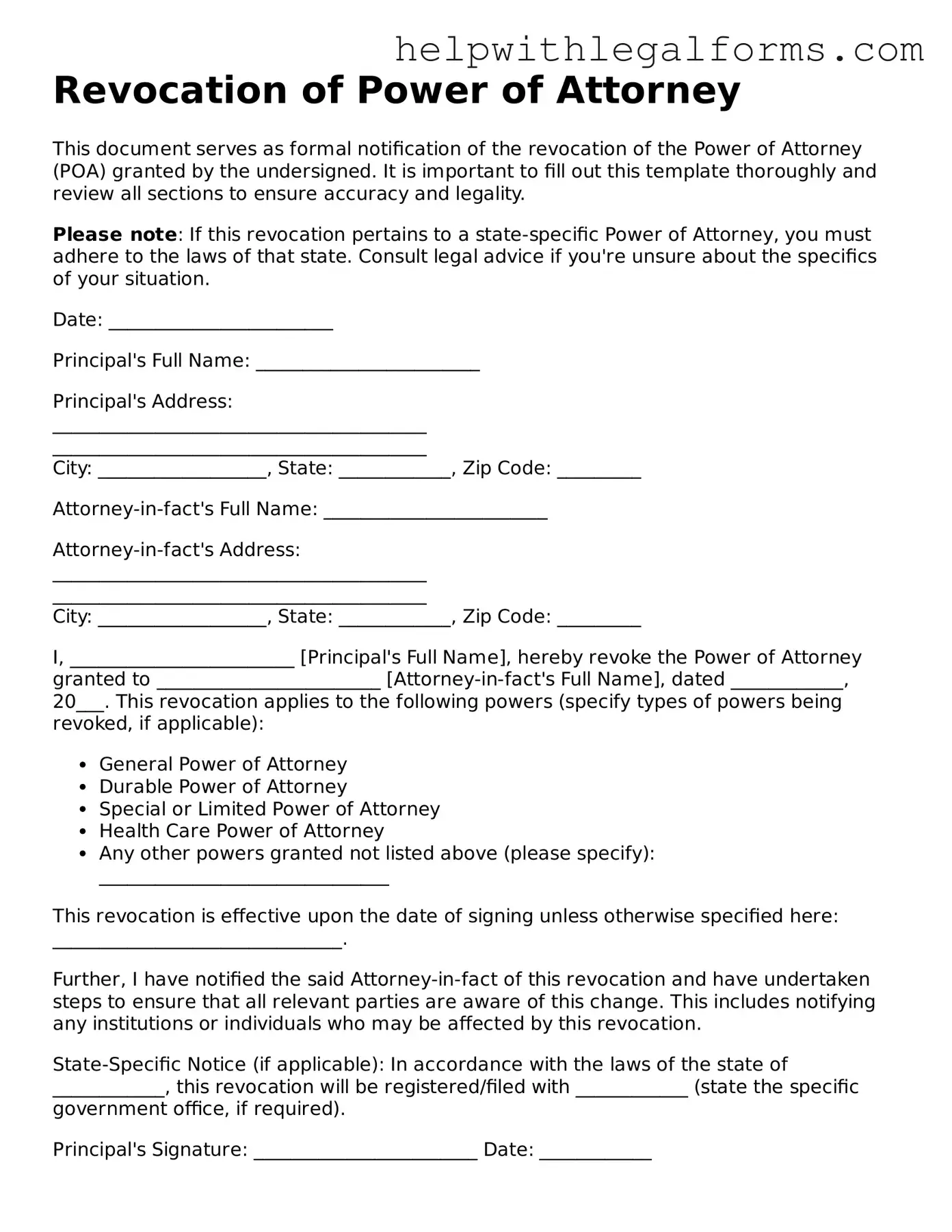Revocation of Power of Attorney
This document serves as formal notification of the revocation of the Power of Attorney (POA) granted by the undersigned. It is important to fill out this template thoroughly and review all sections to ensure accuracy and legality.
Please note: If this revocation pertains to a state-specific Power of Attorney, you must adhere to the laws of that state. Consult legal advice if you're unsure about the specifics of your situation.
Date: ________________________
Principal's Full Name: ________________________
Principal's Address:
________________________________________
________________________________________
City: __________________, State: ____________, Zip Code: _________
Attorney-in-fact's Full Name: ________________________
Attorney-in-fact's Address:
________________________________________
________________________________________
City: __________________, State: ____________, Zip Code: _________
I, ________________________ [Principal's Full Name], hereby revoke the Power of Attorney granted to ________________________ [Attorney-in-fact's Full Name], dated ____________, 20___. This revocation applies to the following powers (specify types of powers being revoked, if applicable):
- General Power of Attorney
- Durable Power of Attorney
- Special or Limited Power of Attorney
- Health Care Power of Attorney
- Any other powers granted not listed above (please specify): _______________________________
This revocation is effective upon the date of signing unless otherwise specified here: _______________________________.
Further, I have notified the said Attorney-in-fact of this revocation and have undertaken steps to ensure that all relevant parties are aware of this change. This includes notifying any institutions or individuals who may be affected by this revocation.
State-Specific Notice (if applicable): In accordance with the laws of the state of ____________, this revocation will be registered/filed with ____________ (state the specific government office, if required).
Principal's Signature: ________________________ Date: ____________
Witness #1 Signature: ________________________ Date: ____________
Witness #2 Signature: ________________________ Date: ____________
Notarization (If required by State Law)
On the _____ day of ____________, 20___, before me, ________________________ (Notary's name), a notary public in and for said state, personally appeared ________________________ [Principal's Full Name], known to me (or proved to me on the basis of satisfactory evidence) to be the person whose name is subscribed to the within instrument, and acknowledged that he/she executed the same for the purposes therein contained.
In Witness Whereof, I have hereunto set my hand and affixed my official seal in the State of ____________, on this _____ day of ____________, 20___.
Notary's Signature: ________________________
Seal:
